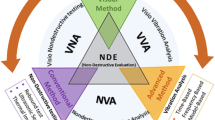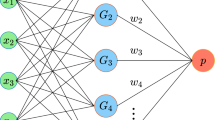Abstract
Flutter derivatives are essential for flutter analysis of long-span bridges, and they are generally identified from the vibration testing data of a sectional model suspended in a wind tunnel. Making use of the forced vibration testing data of three sectional models, namely, a thin-plate model, a nearly streamlined model, and a bluff-body model, a comparative study was made to identify the flutter derivatives of each model by using a time-domain method and a frequency-domain method. It was shown that all the flutter derivatives of the thin-plate model identified with the frequency-domain method and time-domain method, respectively, agree very well. Moreover, some of the flutter derivatives of each of the other two models identified with the two methods deviate to some extent. More precisely, the frequency-domain method usually results in smooth curves of the flutter derivatives. The formulation of time-domain method makes the identification results of flutter derivatives relatively sensitive to the signal phase lag between vibration state vector and aerodynamic forces and also prone to be disturbed by noise and nonlinearity.
Similar content being viewed by others
References
Scanlan R H, Tomko J J. Airfoil and bridge deck flutter derivatives. Journal of the Engineering Mechanics Division, ASCE, 1971, 97: 1717–1737
Falco M, Curami A, Zasso A. Nonlinear effects in sectional model aeroelastic parameters identification. Journal of Wind Engineering and Industrial Aerodynamics, 1992, 42: 1321–1332
Chen Z Q, Yu X D, Yang G, Spencer B F,Jr. Wind-induced self-excited loads on bridges. Journal of Structural Engineering, ASCE, 2005, 131: 1783–1793
Larsen A, Walther J H. Aeroelastic analysis of bridge girder sections based on discrete vortex simulations. Journal of Wind Engineering and Industrial Aerodynamics, 1997, 67–68: 253–265
Matsumoto M, Shiraishi N, Shirato H, Shigetaka K, Niihara Y. Aerodynamic derivatives of coupled/hybrid flutter of fundamental structural sections. Journal of Wind Engineering and Industrial Aerodynamics, 1993, 49: 575–584
Li Q C. Measuring flutter derivatives for bridge sectional models in water channel. Journal of Engineering Mechanics, ASCE, 1995, 121: 90–101
Chen Zhengqing. Time domain method and error analysis to identify flutter derivatives of forced vibration. In: Proceedings of the 11th National Conference of Structural Wind Engineering, Sangya, China, 2003 (in Chinese)
Author information
Authors and Affiliations
Corresponding author
Rights and permissions
About this article
Cite this article
Chen, Z. Time-domain and frequency-domain approaches to identification of bridge flutter derivatives. Front. Archit. Civ. Eng. China 3, 173–179 (2009). https://doi.org/10.1007/s11709-009-0034-1
Received:
Accepted:
Published:
Issue Date:
DOI: https://doi.org/10.1007/s11709-009-0034-1




